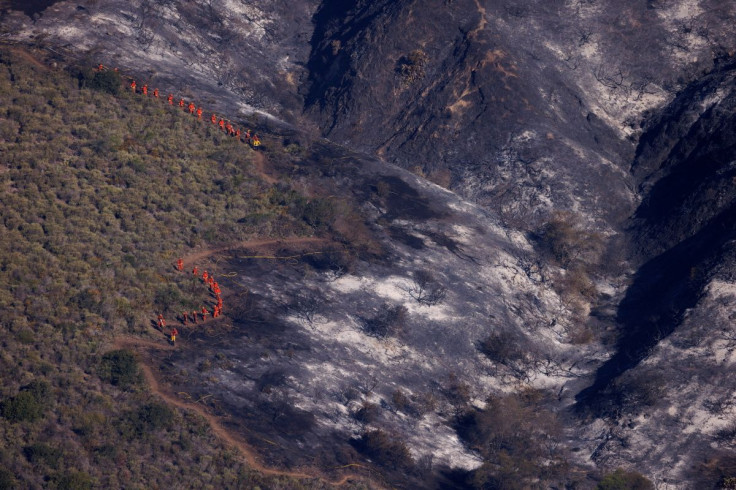Wildfire Seasons Longer, More Intense In West US In The Past 50 Years, Analysis Shows
KEY POINTS
- Southern California and parts of the Southwest now get up to two more months of fire weather
- The analysis indicated that yearly wildfire seasons in the East are also increasing
- Canadian wildfire smoke caused air quality to plummet in parts of the U.S. last week
Wildfire weather days in the United States, especially in the West region, have become longer and more intense in the past 50 years, a new analysis showed. The research comes as parts of the U.S. northeast suffered from poor air quality in recent weeks due to wildfire smoke from Canada.
"Results show that wildfire seasons are lengthening and intensifying, particularly during spring and summer in the West," climate science research non-profit Climate Central wrote in a recent analysis.
Researchers analyzed data from 476 weather stations to determine trends across 245 climate divisions in the country's contiguous states (a geographic term that covers the lower 48 states and the District of Columbia) from 1973 through 2022.
The report noted that some parts of Southwest and southern California are seeing "around two additional months of fire weather compared to the early 1970s."
It isn't just the West, though, as the analysis indicated that yearly wildfire seasons in the East are also increasing even as the average fire weather days are higher in the West.
Climate Central found that the trend in increased wildfire seasons across the country is linked to human-caused climate change.
The report also found that New Mexico, southern California and Texas have experienced some of the highest rates of increased fire weather days each year.
Furthermore, the data suggests that parts of Washington, Oregon, Texas and California are seeing fire weather conditions twice as much now than in the early 1970s.
On the other hand, parts of South Dakota, North Dakota and Idaho saw a decline in the frequency of fire weather seasons, Climate Central found. It added that the slight cooling in the Dakotas may be attributed to agricultural development in the area.
While the analysis has yet to be peer-reviewed, Axios noted that it matched data from similar peer-reviewed data and the method used in the study is widely used in literature of scientific nature.
A study similar to Climate Central's findings found that "record-breaking summer forest fires have become a regular occurrence in California."
The said study, published this week in the Proceedings of the National Academy of Sciences journal, also found that "nearly all" of the increase in burned area in the state in the past 50 years was linked to climate change caused by humans.
While there haven't been any huge wildfires in the U.S. so far in June, there were a total of 5,043 fires that burned 117,771 acres in different parts of the country, as per data from the National Centers for Environmental Information (NCEI).
There were 5,196 wildfires in April that burned 268,817 acres across the U.S. In the last five months, a total of 18,015 fires burned 510,058 acres in the country.
News of the increase in wildfire seasons in the U.S. comes as parts of the northeast suffer from poor air quality due to Canadian wildfire smoke reaching the region.
On Wednesday afternoon, air quality levels in parts of Minnesota reached the red stage, The Star-Tribune reported. "I think it's fair to say probably this one now is the worst episode in the Twin Cities," said Nick Witcraft, an air quality meteorologist with the Minnesota Pollution Control Agency (MPCA).
Last week, New York City recorded the world's worst air quality as wildfires in Canada blew smoke into its neighbor. At the time, NYC logged an air quality rate of 256, which is considered "very unhealthy."
Also last week, toxic haze from Canadian wildfires affected parts of the mid-Atlantic, the Ohio Valley and the Midwest, with air quality levels ranging from "moderate" to "unhealthy," the National Weather Service said as per CBS News.
Meanwhile, the National Interagency Fire Center (NIFC) said earlier this month in its summer wildfire outlook that the northeastern and upper Midwest states are expected to take center stage during the wildfire season this year.
While wildfires in the said areas aren't expected to burn as much land as the Western wildfires usually do, experts said residents should still be wary of the threat that wildfires bring to homes and properties, especially as the Midwest is a densely populated region.

© Copyright IBTimes 2025. All rights reserved.






















